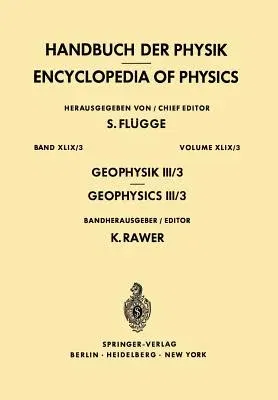Geophysics III/Geophysik III: Part III/Teil III (Softcover Reprint of the Original 1st 1971)Paperback - Softcover Reprint of the Original 1st 1971, 4 January 2012

Qty
1
Turbo
Ships in 2 - 3 days
In Stock
Free Delivery
Cash on Delivery
15 Days
Free Returns
Secure Checkout
Part of Series
Handbuch Der Physik Encyclopedia of Physics
Part of Series
Handbuch Der Physik Encyclopedia of Physics / Geophysik / Ge
Part of Series
Geophysik / Geophysics
Print Length
558 pages
Language
GermanEnglishFrench
Publisher
Springer
Date Published
4 Jan 2012
ISBN-10
3642806414
ISBN-13
9783642806414
Description
Product Details
Book Edition:
Softcover Reprint of the Original 1st 1971
Book Format:
Paperback
Country of Origin:
NL
Date Published:
4 January 2012
Dimensions:
24.41 x
16.99 x
2.92 cm
ISBN-10:
3642806414
ISBN-13:
9783642806414
Language:
German
English
French
Location:
Berlin, Heidelberg
Pages:
558
Publisher:
Series:
Weight:
893.58 gm

